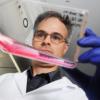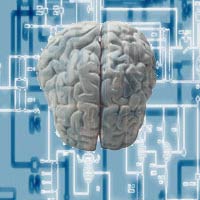Wolfram I addressed why the defective mtDNA of the aged mother is not an issue because all the oocytes are created when the mother is still a fetus but I was curious about why it still doesn't decay over multiple generations and I went looking for articles and found this.
Mitochondria in human oogenesis and preimplantation embryogenesis: engines of metabolism, ionic regulation and developmental competence
Jonathan Van Blerkom
Department of Molecular, Cellular and Developmental Biology, University of Colorado, Boulder, Colorado 80309, USA and Colorado Reproductive Endocrinology, Rose Medcial Center, Denver, Colorado 80220, USA
Correspondence should be addressed to J Van Blerkom, Department of Molecular, Cellular and Developmental Biology, University of Colorado, Boulder, Colorado 80309, USA; Email: vanblerk@spot.colorado.edu
Abstract
Mitochondria are the most abundant organelles in the mammalian oocyte and early embryo. While their role in ATP production has long been known, only recently has their contribution to oocyte and embryo competence been investigated in the human. This review considers whether such factors as mitochondrial complement size, mitochondrial DNA copy numbers and defects, levels of respiration, and stage-specific spatial distribution, influence the developmental normality and viability of human oocytes and preimplantation-stage embryos. The finding that mitochondrial polarity can differ within and between oocytes and embryos and that these organelles may participate in the regulation of intracellular Ca2+homeostasis are discussed in the context of how focal domains of differential respiration and intracellular-free Ca2+regulation may arise in early development and what functional implications this may have for preimplantation embryogenesis and developmental competence after implantation.
Introduction
In clinical in vitro fertilization (IVF), current investigational efforts are directed to understanding why a high proportion of oocytes result in developmentally incompetent embryos. Studies of embryo performance during the pre-implantation stages show high frequencies of abnormal development and early demise, with further losses seen after uterine transfer as measured by outcome per embryo.
There is a growing consensus of opinion that much of this embryonic wastage originates from oocyte chromosomal and subtle cytoplasmic defects whose adverse developmental consequences are not expressed until well after fertilization. The notion that mitochondrial dysfunctions or abnormalities in the oocyte may be a critical determinant of human embryo developmental competence has gained currency from recent studies in which defects at the structural and mitochondrial DNA (mtDNA) levels have been identified. Likewise, the number of mtDNA copies has been shown to differ between human oocytes (in the same cohort) by over an order of magnitude, and for the early embryonic stages developmentally significant differences in mitochondrial numbers between blastomeres can result from disproportionate inheritance during the cleavage stages.
Structural, spatial and genetic dysfunctions that affect the capacity of mitochondria to produce ATP by oxidative phosphorylation could have pleiotropic affects on early human development that, as described below, may include the normality of spindle organization and chromosomal segregation, timing of the cell cycle, and morpho-dynamic processes such as compaction, cavitation and blastocyst hatching. Mitochondrial dysfunctions that may initiate or contribute to the activation of apoptosis have also been suggested to be a proximal cause of human oocyte wastage and early embryo demise.
Because the normalcy of critical nuclear and cytoplasmic activities may be determined by mitochondria, it is not surprising that their role in early human development as related to outcome in IVF treatments has become a subject of clinical and basic research interest (Christodoulou 2000, Howell et al. 2000, Jansen 2000a,b, Cummins 2002, 2004, Brenner 2004, Chinnery 2004, Eichenlaub-Ritter et al. 2004). From a basic science viewpoint, the extent to which mitochondria contribute to or actually determine oocyte and embryo competence must be better understood if proactive clinical therapies such as oocyte mitochondrial donation/replacement (Cohen et al. 1997) are to be considered acceptable treatments for certain types of infertility in which a mitochondrial association has been clearly identified (Brenner 2004, St John et al. 2004).
Mitochondria as genetic forces in early human development
Mitochondrial transmission across generations is uniparental
It has long been known that the human mitochondrial genome is 16 560 kb of double stranded DNA that encodes 13 proteins in the respiratory chain, and 22 unique transfer RNAs and 2 ribosomal RNAs (Clayton 2000, Trounce 2000). Although not without some controversy (Cummins 2004), mitochondria are inherited through the maternal lineage with paternal mitochondria arriving at fertilization targeted for destruction primarily by ubiquitin-dependent proteolysis (Schwartz & Vissing 2002, 2003, Johns 2003, Sutovsky 2004).
The maternal transmission of mitochondria between generations is the genetic basis for the inheritance of certain debilitating or ultimately lethal metabolic disorders in the human (Chinnery & Turnbull 1999, Christodoulou 2000, Leonard & Schapira 2000, Chinnery 2004), and heterogeneity in mtDNA is used in forensic medicine to assist in the identification of individuals and in anthropology to trace the origins and geographical dispersal of populations.
All of the mitochondria in the mature oocyte (metaphase II, MII stage) arise from the clonal expansion of an extremely small number of organelles present in each primordial germ cell that after colonization of the forming ovary, expands by mitosis to form numerous progeny that can be identified as ‘nests’ of primordial oocytes (Makabe & Van Blerkom 2004). By some estimates (Jansen 2000b), <10 mitochondria may be the progenitors of the tens to hundreds of thousands of organelles present in the human oocyte at fertilization. That mitochondrial transmission across generations is uniparental and that procreation requires their significant numerical expansion presents some potentially unique biological challenges. For example, it has been argued that this uniparental replication might be expected to follow the ultimately lethal consequences of Muller’s ratchet hypothesis (Muller 1964, and concisely discussed by Jansen 2000a), whereby species extinction is an inevitable consequence of asexual reproduction owing to the accumulation of deleterious mutations by random genetic drift. Indeed, because of maternal inheritance and high mutation frequency, the human mtDNA should be prone to Muller’s ratchet. Counteracting this natural entropic tendency to mutational degradation and extinction is the severe reduction in maternal germline mtDNA copy number in the primordial germ cell, a phenomenon generally known as the ‘mitochondrial bottleneck’ (Bergstrom & Pritchard 1998). As a result of the reduction in progenitor organelles, the accumulation of mtDNA mutations is diminished with certain mutations, such as those that could adversely affect replication or metabolic capacity being eliminated by natural selection or ‘dying out’ through oogenesis (Hoekstra 2000).
However, others have argued that there is not a single mitochondrial bottleneck at the outset of oogenesis, but rather an active selection process that occurs throughout oogenesis and early embryogenesis and involves multiple stage-specific bottlenecks and differential patterns of mitochondrial segregation (Howell et al. 2000). The occurrence of individuals with maternally inherited metabolic diseases (OXPHOS diseases) resulting from known mtDNA mutations demonstrates that (a) the bottleneck is not an effective natural means of eliminating oocytes carrying potentially lethal mitochondrial genetic defects and (b) that developmental competence does not require that the mitochondrial complement be genetically normal or even capable of normal levels of respiration (oxidative phosphorylation).
Mitochondrial transmission between generations is not necessarily monogenomic: homoplasmy and heteroplasmy
As maternally inherited organelles, the mtDNA genotype(s) in the embryo is largely determined by what existed in the few mitochondria contained within the primordial germ cell and resulting primary oocyte. If the expansion of the mitochondrial population during oogenesis involves an identical genome, the MII oocyte and resulting embryo would be expected to be homoplasmic. Heteroplasmy occurs when two or more different mitochondrial genotypes occur in the same cell, whether a primordial germ cell, oogonia, oocyte or blastomere. Heteroplasmy per se does not imply an adverse condition if the mtDNA mutations are benign with respect to function, but can become problematic and have cytopathological consequences if the mutant form(s) has reduced respiratory capacity and occurs at toxic levels (mutant load). While heteroplasmy as a factor in human infertility or early embryo demise is a current issue in reproductive medicine (Brenner 2004, Cummins 2002, 2004), it is necessary to note that adverse developmental consequences of mtDNA mutations become relevant only when they affect mitochondrial activities (e.g. replication and respiration) at levels that are inconsistent with cell survival or normal function (Christodoulou 2000). Indeed, the threshold levels at which OXPHOS diseases become clinically significant are usually quite high (Chinnery & Turnbull 1999, Leonard & Schapira 2000, Trounce 2000).
Heteroplasmy, detected by highly sensitive analysis of mtDNA in the oocytes of certain women, has been related to infertility by virtue of the occurrence of certain mtDNA genotypes such as the ‘common deletion’ mtDNA 4977, which in one report was proposed to increase with maternal age and negatively affect competence in women >40 years old (Keefe et al. 1995). However, in a recent review of the relationship between competence and the various types of mtDNA mutations detected in human oocytes obtained by ovarian hyperstimulation for IVF, Brenner (2004) found no compelling evidence to suggest that any occurred at loads which could compromise outcome. This is not to say that mtDNA is unimportant in the establishment of competence or as an etiology of infertility but rather, that additional investigation is needed to validate such interpretations, especially if proactive therapies (e.g. cytoplasmic transfer) are contemplated in an IVF treatment cycle. In this respect, Brenner (2004) described some promising leads related to point mutations in the control region of the mitochondrial genome responsible for replication. These mutations seemed to increase in frequency in the oocytes of certain women, especially those of advanced reproductive age and, if confirmed, could be an important and unrecognized factor in outcome because mitochondrial replication does not begin until after implantation. Therefore, replication defects would not be expected to compromise preimplantation embryogenesis, but depending upon mutant load, could manifest as post-implantation demises described as chemical (transient elevation of human chorionic gonadotropin levels) or anembryonic pregnancies (no fetal pole detected by ultra-sonography).
Experimental approaches to the question of whether specific mtDNA defects in human oocytes cause postim-plantation demise require some formidable challenges to be overcome. For example, are unused blastocysts from IVF programs, even if available, suitable material to screen for mtDNA defects and should the trophoblast and inner cell mass (ICM) be analyzed separately? For patients with a history of repeated chemical or anembryonic pregnancies, is it ethical to use IVF protocols to generate multiple blastocysts such that some could be transferred or cryopreserved while others are used for mtDNA analysis? If specific mtDNA mutations that affect competence during the pre- and postimplantation stages are clearly identified, screening and ethical issues become moot as it would be expected that the same protocols used for embryo biopsy and preimplantation genetic diagnosis as applied to chromosomes and nuclear DNA (Verlinsky & Kuliev 2000) would be applicable to mtDNA.
However, an assessment of whether a particular mtDNA mutation could influence competence and outcome requires the ability to accurately quantify the mutant load. This is especially evident when it is considered that some mtDNA-related OXPHOS diseases clinically manifest only when a genetic defect occurs at high load (Christodoulou 2000), while for others the severity of the clinical symptoms is proportional to the mutant load (Dahl et al. 2000). Whether the finding that mtDNA copy numbers that can vary by over an order of magnitude between MII oocytes in the same cohort (see below) presents another challenge for the application of mitochondrial analysis in clinical IVF, remains to be determined.
Mitochondria as metabolic forces in early development
Mitochondrial fine structure and metabolic activity
It has long been known from transmission electron microscopy (TEM; Sotelo & Porter 1959, Baca & Zamboni 1967) that mitochondria in mammalian oocytes and early embryos have a unique fine structure in which a spherical profile, dense matrix and relatively few cristae are indicative of an undeveloped state (for reviews see Van Blerkom & Motta 1979, Makabe & Van Blerkom 2004). What makes recent TEM studies of human oocytes and embryos clinically relevant is the possibility that structural abnormalities detected in certain infertile women could be associated with mitochondrial dysfunctions that reduce their metabolic activity and may, therefore, be an important etiology of oocyte or embryo incompetence (Motta et al. 2000, for review). This may be especially relevant in women of advanced reproductive age as reported by Muller-Hocker et al.(1996).
Similar to other mammals (Van Blerkom & Motta 1979), mitochondria in fully-grown human oocytes are the most abundant organelles detected by electron microscopy (Fig. 1A) and occur as spherical/ovoid elements <0.5 µm in diameter (Dvorak et al. 1987). Typically, these mitochondria contain only a few short cristae that rarely penetrate an electron-dense matrix (Fig. 1B and C). This phenotype persists through the cleavage and late morulae stages of human embryogenesis in vitro before a gradual transition to an elongated form with a matrix of low-to-moderate electron density is observed (arrows, Fig. 1D and E). An increased number of lamellar cristae that completely traverse the inner mitochondrial matrix is generally characteristic of mitochondria actively engaged in ATP production by oxidative metabolism, and this profile represents the predominant form seen at the blastocyst stage in most mammals. For the human preimplantation embryo developing in vitro, serial section TEM analysis has shown that at the blastocyst stage virtually all cells contain (albeit in different proportions) both undeveloped and well-developed mitochondria (Fig. 1D).
Unlike the situation that prevails in other mammals such as the mouse and rabbit (Van Blerkom & Motta 1979), for the human blasto-cyst the fully developed mitochondrial phenotype shown in Fig. 1E may predominate in some cells and be comparatively scarce in others (Sathananthan et al. 1993, Van Blerkom 1993). It is not known whether the apparent cell-specific differences in the state of mitochondrial differentiation observed in human blastocysts are related to the conditions of culture and therefore not representative of the in vivo situation. Alternatively, they could be a normal aspect of early human development and represent developmentally significant differences in mitochondrial activity within the embryo, perhaps related to differential cell function, as discussed below for the mouse blastocyst.
{excerpts}
While most of this study was related to difficulties arising from invitro fertilization it overlapped a discussion we have been separately having about the process of Mitochondrial aging and I thought it relevant to this thread and meriting raising the again the questio of do we yet fully understand what is happening to the mtDNA during oocyte formation?
What I find interesting is that something that apparantly happens during the formation of the oocyte also appears to reset the mtDNA clock.


















































